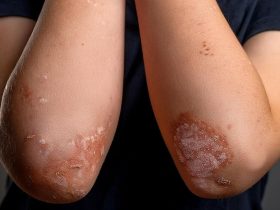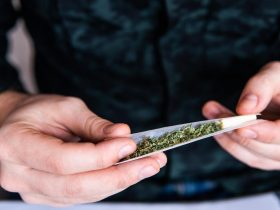The American Psychiatric Association 2022 Annual Meeting
The annual meeting of the American Psychiatric Association was held from May 21 to 25 in New Orleans and attracted participants from around the world, including clinicians, academicians, allied health professionals, and others interested in psychiatry. The conference highlighted recent advances in the prevention, detection, and treatment of psychiatric conditions.
In one presentation, Kiara Alvarez, Ph.D., of Massachusetts General Hospital and Harvard Medical School in Boston, and colleagues provided recommendations for addressing structural racism in youth suicide prevention.
After evaluating the impact of structural racism within mental health services, the education system, and the justice system, the researchers provided recommendations to address structural racism in suicide prevention. Recommendations included promoting solutions at multiple levels, starting with supporting policies that promote racial and economic equity, increasing the focus on suicide prevention practices that will benefit all youth, and finding ways to separate a mental health crisis response from school discipline and law enforcement systems.
“Clinicians are key to the suicide prevention continuum, in systems ranging from primary care to specialty mental health care to emergency care and in many other settings. They have an important role to play in their direct interactions with patients, in their advocacy for how the systems they work within respond to patients, and in how they collaborate with communities,” Alvarez said. “It’s important for clinicians to know that asking about suicide does not cause someone to have suicidal thoughts. In fact, the opposite is true, and open conversations about suicide help youth know that there are people who care and want to help. From there, to specifically address how structural racism impacts suicide prevention, clinicians can promote suicide prevention and intervention practices that are person-centered, culturally responsive, and focus on building strengths and resources for youth.”
In a related presentation, Margarita AlegrÃa, Ph.D., of Massachusetts General Hospital in Boston, and colleagues provided insight into two types of investments that could amplify the impact of the 2022 federal Community Mental Health Services Block Grants (which have provided $1.6 billion in funding), including evidence-based policies that address unmet social needs (i.e., universal school meals and child savings accounts) and mental health prevention programs designed by and for communities of color.
The presenters offered details on interventions with sound evidence for improving mental health (i.e., decreasing or preventing clinical symptoms) or mental health-related outcomes (i.e., increasing quality of life or mental health literacy) among people of color in the United States. These goals can be met within five years by addressing social determinants of health or changing the context so as to make the healthy choice the easy choice. The presenters described the interventions and summarized the evidence of their impact on mental health and mental health-related outcomes.
For children and adolescents, the interventions include universal school meal programs, child savings accounts, comprehensive behavioral health models, and workforce support for recreational afterschool programs. For adults, examples include the Housing First model, individual placement and support for employment, earned income tax credits, mental health literacy campaigns, and community-led programs for mental health prevention offered by paraprofessionals.
“For older adults, [the interventions] highlight expansion of green and blue spaces (i.e., greening vacant urban land), senior centers offering health promotion activities, dual exercise and psychosocial programs for disability prevention (Positive Minds-Strong Bodies), and peer-led programs for managing chronic mental health conditions,” AlegrÃa said.
Gaëlle Rached, M.D., of Northwestern University in Chicago, and colleagues found that Lebanese expatriates are negatively affected by traumatic events happening in Lebanon, months after the traumatic incident, no matter how long they have been away from their country.
The researchers presented the results of a survey conducted via social media seven months after the explosion in Beirut on August 4, 2020, to investigate the mental health repercussions of the explosion on Lebanese expatriates. A total of 1,117 participants completed the survey; 447 participants were excluded because they were not Lebanese or they were still living in Lebanon at the time of the blast. On the Hopkins Symptom Checklist, a 20-item self-reporting questionnaire commonly used in disaster medicine screening for anxiety and depression, 41.2 percent of the participants had scores higher than the threshold. Only the 268 participants who experienced the blast firsthand or whose close family or loved ones suffered physical damage from the blast completed the posttraumatic stress disorder (PTSD) screening tool, and 57.5 percent were found to exhibit PTSD-related symptoms.
“Expats are already under stressful living conditions. Little is known about expats’ mental health, let alone in the context of traumatic events in their home country,” Rached said. “We need to provide additional support to this population especially if their home country is going through a traumatic event.”
Aaron I. Esagoff, of the Johns Hopkins University School of Medicine in Baltimore, and colleagues identified structural brain changes among individuals participating in mixed martial arts (MMA). Structural brain changes were found to be dependent on the number of sparring sessions.
Using a cross-sectional analysis that included adjusted multivariate regression analyses, the authors examined the effects of customary sparring practice rounds per week on white matter and a limited number of regional brain volumes measured by single magnetic resonance imaging (MRI) scans. Models were adjusted for age, sex, education, race, professional fights, total intracranial volume, and type of MRI scanner. The researchers found that the number of customary sparring practice rounds per week was significantly associated with increased white matter hyperintensity volume and bilateral caudate volume.
“The take home message is that, from our preliminary study, sparring practice in MMA fighters may have a double-edged sword effect on the brain, as we have associated sparring practice with larger caudate volume but also potential white matter damage,” Esagoff said. “However, we also conclude that more research is needed to further investigate the impacts of sparring practice in MMA fighters and our findings need to be replicated.”
Copyright © 2022 HealthDay. All rights reserved.







